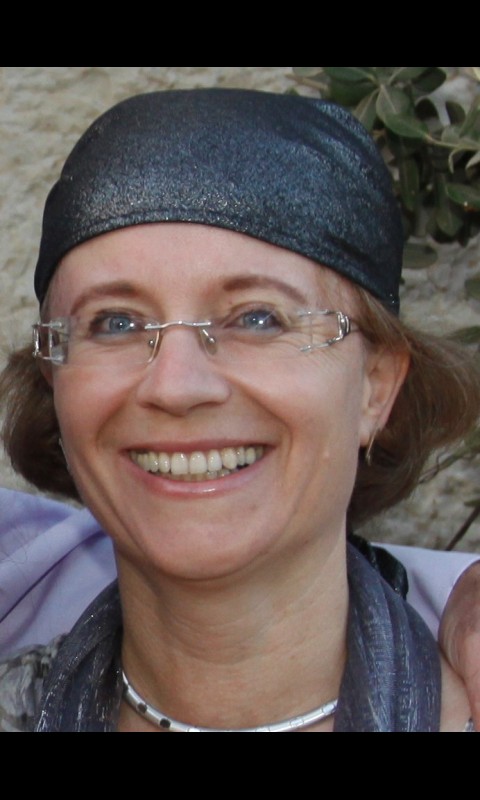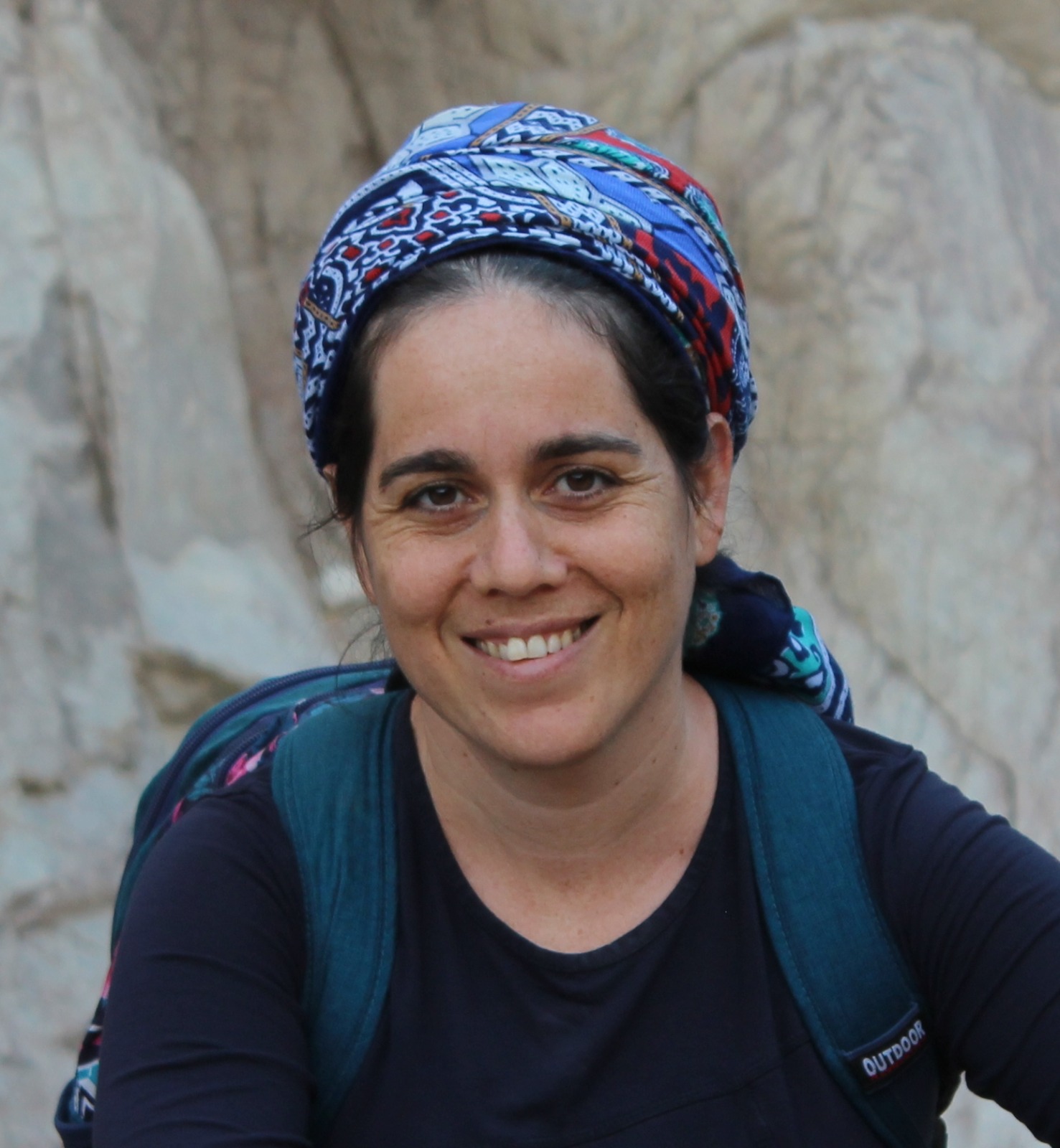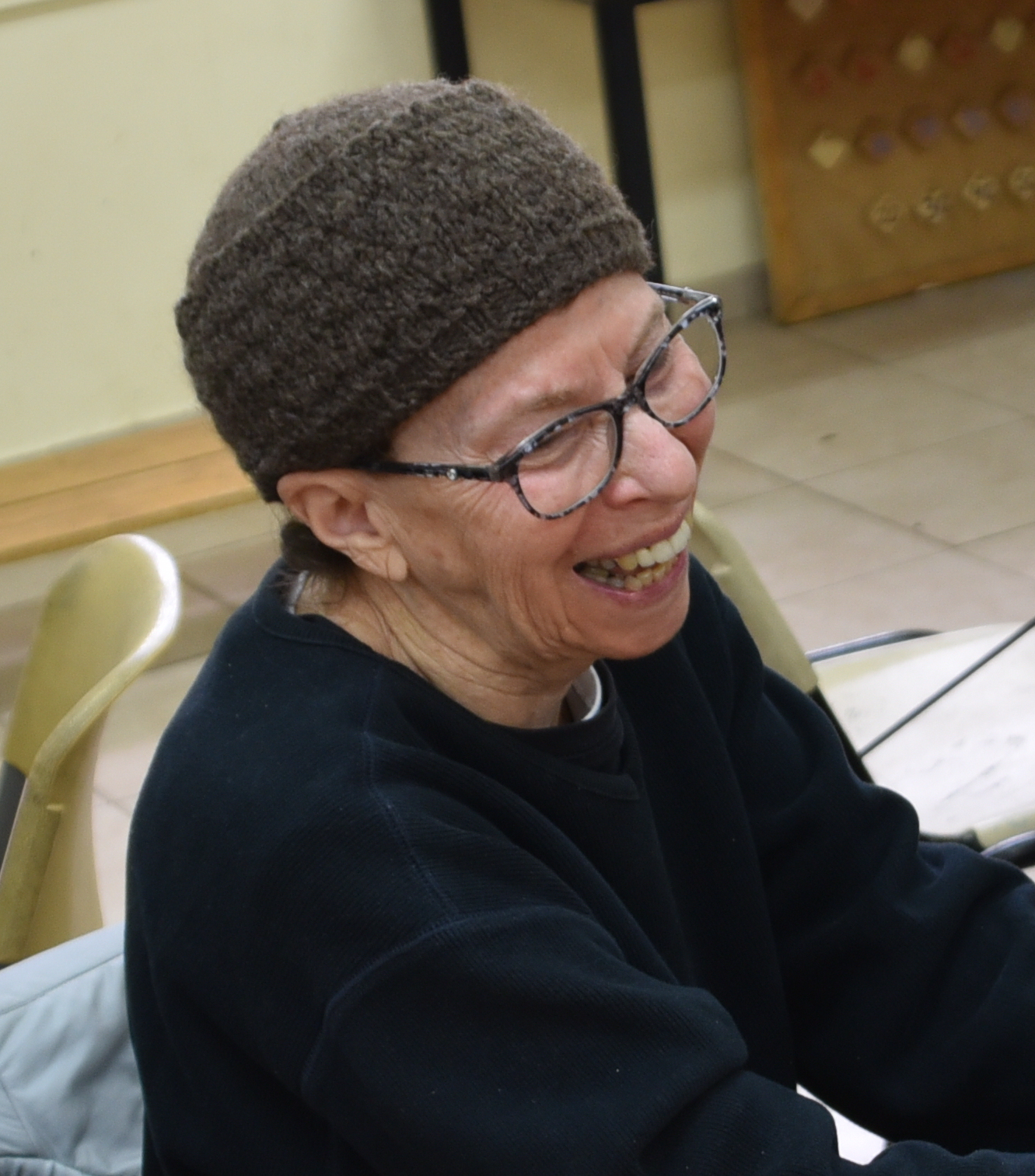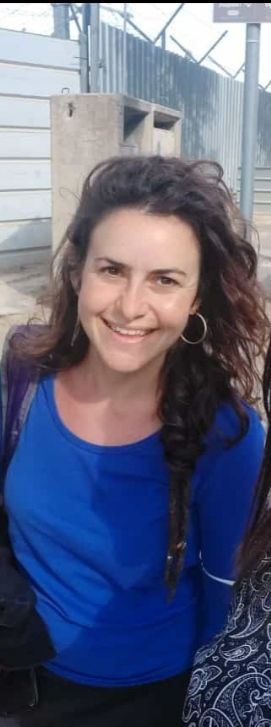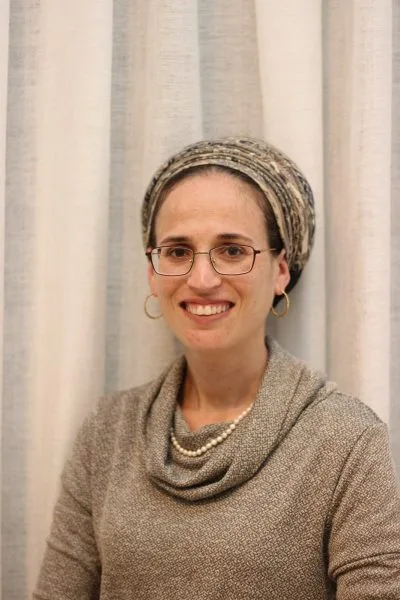רוצה להקדיש לימוד?

תקציר
חדשה בלימוד הגמרא?
זה הדף הראשון שלך? איזו התרגשות עצומה! יש לנו בדיוק את התכנים והכלים שיעזרו לך לעשות את הצעדים הראשונים ללמידה בקצב וברמה שלך, כך תוכלי להרגיש בנוח גם בתוך הסוגיות המורכבות ומאתגרות.
פסיפס הלומדות שלנו
גלי את קהילת הלומדות שלנו, מגוון נשים, רקעים וסיפורים. כולן חלק מתנועה ומסע מרגש ועוצמתי.
עירובין צ
לְנַטּוֹרֵי תַּרְבִּיצָא הוּא דַּעֲבִידָא.
that he built the upper story to protect the garden [tarbitza], not to access the roofs.
בְּעַי רָמֵי בַּר חָמָא: שְׁתֵּי אַמּוֹת בְּגַג וּשְׁתֵּי אַמּוֹת בְּעַמּוּד מַהוּ? אָמַר רַבָּה: מַאי קָא מִיבַּעְיָא לֵיהּ, כַּרְמְלִית וּרְשׁוּת הַיָּחִיד קָא מִיבַּעְיָא לֵיהּ?
Rami bar Ḥama raised a dilemma: According to Rav, who holds that one may carry only within four cubits on each roof, if he carries an object two cubits on a roof and another two cubits on a pillar ten handbreadths high and four handbreadths wide adjacent to the roof, what is the halakha? Rabba said: With regard to what matter is he raising a dilemma? Is it with regard to a karmelit and a private domain that he is raising a dilemma? The roof is a karmelit and the pillar is a private domain; certainly carrying from one to the other is prohibited.
וְרָמֵי בַּר חָמָא אַגַּב חוּרְפֵּיהּ לָא עַיֵּין בַּהּ, אֶלָּא הָכִי קָמִיבַּעְיָא לֵיהּ: שְׁתֵּי אַמּוֹת בְּגַג וּשְׁתֵּי אַמּוֹת בְּאַכְסַדְרָה, מַהוּ?
The Gemara explains that this was not in fact the dilemma, and Rami bar Ḥama, due to his keen mind, did not analyze the dilemma carefully and was imprecise in its formulation. Rather, this is the dilemma he is raising: If one carries an object two cubits on the roof of a house, and another two cubits on the slanted roof of a portico, a roofed structure without walls, before a house belonging to someone else, what is the halakha?
מִי אָמְרִינַן: כֵּיוָן דְּלָא הַאי חֲזֵי לְדִירָה וְלָא הַאי חֲזֵי לְדִירָה — חֲדָא רְשׁוּתָא הִיא. אוֹ דִילְמָא: כֵּיוָן דְּמִגַּג לְגַג אֲסִיר, מִגַּג לְאַכְסַדְרָה נָמֵי אֲסִיר.
The Gemara elaborates on Rami bar Ḥama’s dilemma: Do we say that since neither this roof is fit for residence, nor is this portico roof fit for residence, it is regarded as one domain, and therefore carrying between them is permitted? Or perhaps since carrying from a roof to another roof is prohibited, carrying from a roof to a portico is likewise prohibited, as the latter is also a domain in and of itself.
בָּעֵי רַב בִּיבִי בַּר אַבָּיֵי: שְׁתֵּי אַמּוֹת בְּגַג וּשְׁתֵּי אַמּוֹת בְּחוּרְבָּה, מַהוּ?
Rav Beivai bar Abaye raised a similar dilemma: If one carries two cubits on the roof of a house and another two cubits on the roof of a ruin belonging to someone else, one side of which was completely open to a public domain, what is the halakha?
אָמַר רַב כָּהֲנָא: לָאו הַיְינוּ דְּרָמֵי בַּר חָמָא?! אָמַר רַב בִּיבִי בַּר אַבָּיֵי: וְכִי מֵאַחֵר אֲתַאי וּנְצַאי? אַכְסַדְרָה לָא חַזְיָא לְדִירָה, וְחוּרְבָּה חַזְיָא לְדִירָה.
Rav Kahana said: Is that not precisely the same dilemma raised by Rami bar Ḥama with regard to a portico? Rav Beivai bar Abaye said: And did I come late [me’aḥer] merely to quarrel, and meddle in other people’s questions? That is not the case, as the two dilemmas are not identical. A portico is not fit for residence, while a ruin is fit for residence. Therefore, the halakha might differ in each case.
וְכִי מֵאַחַר דְּחַזְיָא לְדִירָה מַאי קָמִיבַּעְיָא לֵיהּ! ״אִם תִּימְצֵי לוֹמַר״ קָאָמַר: אִם תִּימְצֵי לוֹמַר אַכְסַדְרָה לָא חַזְיָא לְדִירָה — חוּרְבָּה חַזְיָא לְדִירָה? אוֹ דִילְמָא: הַשְׁתָּא מִיהָא לֵית בַּהּ דָּיוֹרִין. תֵּיקוּ.
The Gemara is surprised by this explanation: And now that it is fit for residence, what dilemma is he raising? The situation is comparable to the case of two standard roofs. The Gemara answers: Rav Beivai was unaware of the resolution to the dilemma raised by Rami bar Ḥama, and therefore, he states the dilemma employing the style: If you say. If you say that a portico is not fit for residence, and therefore carrying is permitted, it can be argued that as a ruin is fit for residence, the legal status of its roof should be like that of a standard roof. Or perhaps that is not the case, as now in any event there are no residents in the ruin, and therefore its roof is not comparable to a standard roof. No resolution was found for these dilemmas, and they stand unresolved.
גַּגִּין הַשָּׁוִין לְרַבִּי מֵאִיר, וְגַג יְחִידִי לְרַבָּנַן, רַב אָמַר: מוּתָּר לְטַלְטֵל בְּכוּלּוֹ, וּשְׁמוּאֵל אָמַר: אֵין מְטַלְטְלִין בּוֹ אֶלָּא בְּאַרְבַּע.
The Gemara discusses a different question. With regard to roofs that are level, i.e., with a height disparity of less than ten handbreadths, according to the opinion of Rabbi Meir, or an isolated roof that does not border other roofs, according to the opinion of the Rabbis, Rav said: It is permitted to move an object throughout the entire roof; and Shmuel said: One may move an object in it only within four cubits.
רַב אָמַר: מוּתָּר לְטַלְטֵל בְּכוּלּוֹ, קַשְׁיָא דְּרַב אַדְּרַב! הָתָם לָא מִינַּכְרָא מְחִיצְתָּא. הָכָא מִינַּכְרָא מְחִיצְתָּא.
The Gemara seeks to clarify the conflicting opinions. Rav said that it is permitted to move objects throughout the entire roof. This is difficult, as there is an apparent contradiction between one statement of Rav and another statement of Rav. With regard to level roofs, Rav said that according to the Rabbis one may carry on each roof only within four cubits. The Gemara answers: There, in the case of a roof among roofs, the inner partitions between the houses are not conspicuous, and therefore, are not taken into consideration. Here, however, the outer partitions of a single house or group of houses are conspicuous, meaning that they are considered to extend upward and delineate the edge of the roof.
וּשְׁמוּאֵל אָמַר: אֵין מְטַלְטְלִין בּוֹ אֶלָּא בְּאַרְבַּע אַמּוֹת, קַשְׁיָא דִּשְׁמוּאֵל אַדִּשְׁמוּאֵל! הָתָם, לָא הָוֵי יוֹתֵר מִבֵּית סָאתַיִם. הָכָא, הָוֵי יוֹתֵר מִבֵּית סָאתַיִם, וְהָנֵי מְחִיצוֹת לְמַטָּה עֲבִידָן, לְמַעְלָה לָא עֲבִידָן, וְהָוֵה כְּקַרְפֵּף יָתֵר מִבֵּית סָאתַיִם שֶׁלֹּא הוּקַּף לְדִירָה, וְכׇל קַרְפֵּף יוֹתֵר מִבֵּית סָאתַיִם שֶׁלֹּא הוּקַּף לְדִירָה — אֵין מְטַלְטְלִין בּוֹ אֶלָּא בְּאַרְבַּע.
The Gemara returns to discuss Shmuel’s ruling. And Shmuel said: One may carry only within four cubits. Once again, it is difficult, as there is an apparent contradiction between one statement of Shmuel and another statement of Shmuel, who said that in the case of level roofs, according to the Rabbis one may carry throughout each separate roof. The Gemara answers: There, the area of the roof is no greater than two beit se’a; whereas here, the area is greater than two beit se’a. And these partitions of the house were erected for use below as partitions for the residence itself; they were not erected to serve as partitions for use on the roof above. Consequently, even if the walls are viewed as extending upward so that they constitute surrounding partitions for the roof, the legal status of the roof is like that of an enclosure greater than two beit se’a that was not enclosed from the outset for the purpose of residence; and the principle is that with regard to any enclosure greater than two beit se’a that was not enclosed from the outset for the purpose of residence, one may move an object in it only within four cubits.
אִיתְּמַר, סְפִינָה. רַב אָמַר: מוּתָּר לְטַלְטֵל בְּכוּלָּהּ, וּשְׁמוּאֵל אָמַר: אֵין מְטַלְטְלִין בָּהּ אֶלָּא בְּאַרְבַּע. רַב אָמַר: מוּתָּר לְטַלְטֵל בְּכוּלָּהּ —
It was further stated that these same amora’im disagreed with regard to a large ship. Rav said: It is permitted to move an object throughout the entire ship, as it is all one domain; and Shmuel said: One may move an object in it only within four cubits. The Gemara proceeds to clarify their respective opinions. Rav said: It is permitted to move an object throughout the boat,
דְּהָא אִיכָּא מְחִיצָתָא. וּשְׁמוּאֵל אָמַר: אֵין מְטַלְטְלִין בָּהּ אֶלָּא בְּאַרְבַּע אַמּוֹת — מְחִיצוֹת לְהַבְרִיחַ מַיִם עֲשׂוּיוֹת.
as there are partitions. And Shmuel said: One may move an object in it only within four cubits, as the partitions of the ship are not considered full-fledged partitions; they are erected only to keep water out, not to render it a residence.
אֲמַר לֵיהּ רַב חִיָּיא בַּר יוֹסֵף לִשְׁמוּאֵל: הִילְכְתָא כְּווֹתָךְ אוֹ הִילְכְתָא כְּרַב? אֲמַר לֵיהּ: הִילְכְתָא כְּרַב.
Rav Ḥiyya bar Yosef said to Shmuel: Is the halakha in accordance with your opinion or is the halakha in accordance with the opinion of Rav? Shmuel said to him: The halakha is in accordance with the opinion of Rav, as his rationale is more convincing.
אָמַר רַב גִּידֵּל אָמַר רַב חִיָּיא בַּר יוֹסֵף: וּמוֹדֶה רַב שֶׁאִם כְּפָאָהּ עַל פִּיהָ, שֶׁאֵין מְטַלְטְלִין בָּהּ אֶלָּא בְּאַרְבַּע אַמּוֹת. כְּפָאָהּ, לְמַאי? אִילֵימָא לָדוּר תַּחְתֶּיהָ, מַאי שְׁנָא מִגַּג יְחִידִי?
Rav Giddel said that Rav Ḥiyya bar Yosef said: And Rav concedes that if one overturned the ship onto its mouth, and it is more than ten handbreadths high, that one may move an object on it only within four cubits. The Gemara asks: For what purpose was the ship overturned? If you say it was overturned so that one may reside beneath it, what is the difference between it and an isolated roof? The legal status of the overturned ship should in every sense be that of a house, and therefore it should be permitted to carry throughout the entire ship.
אֶלָּא שֶׁכְּפָאָהּ לְזוֹפְתָהּ.
Rather, it must be that he overturned it to tar it, i.e., to add a fresh coat to its underside. In that case, the boat certainly does not serve as a residence, and its sides are not considered full-fledged partitions.
רַב אָשֵׁי מַתְנֵי לַהּ אַסְּפִינָה, וְרַב אַחָא בְּרֵיהּ דְּרָבָא מַתְנֵי לַהּ אַאַכְסַדְרָא. דְּאִיתְּמַר, אַכְסַדְרָה בְּבִקְעָה. רַב אָמַר: מוּתָּר לְטַלְטֵל בְּכוּלָּהּ, וּשְׁמוּאֵל אָמַר: אֵין מְטַלְטְלִין בָּהּ אֶלָּא בְּאַרְבַּע.
Rav Ashi teaches Shmuel’s acceptance of Rav’s opposing view (Ritva) with regard to a ship, as stated above; and Rav Aḥa, son of Rava, teaches it with regard to a portico, as it was stated that amora’im disagreed with regard to a portico located in a field. A portico has a roof and either incomplete walls or no walls. Consequently, in the case of a portico located in a valley, which is a karmelit, it remains to be determined whether or not it is permitted to carry in it. Rav said: It is permitted to move an object throughout the entire portico, as it is a private domain. And Shmuel said: One may move an object in it only within four cubits.
רַב אָמַר: מוּתָּר לְטַלְטֵל בְּכוּלָּהּ — אָמְרִינַן פִּי תִקְרָה יוֹרֵד וְסוֹתֵם. וּשְׁמוּאֵל אָמַר: אֵין מְטַלְטְלִין בָּהּ אֶלָּא בְּאַרְבַּע — לָא אָמְרִינַן פִּי תִקְרָה יוֹרֵד וְסוֹתֵם.
The Gemara elaborates. Rav said: It is permitted to move an object throughout the entire portico, as we say: The edge of the roof descends to the ground and seals the portico on all sides, rendering it a private domain. And Shmuel said: One may move an object in it only within four cubits, as we do not say: The edge of the roof descends to the ground and seals the portico.
וְרַב אַלִּיבָּא דְּרַבִּי מֵאִיר, לִיטַּלְטְלֵי מִגַּג לְחָצֵר?! גְּזֵירָה מִשּׁוּם דְּרַב יִצְחָק בַּר אַבְדִּימִי.
The Gemara asks: But according to Rav’s statement in accordance with the opinion of Rabbi Meir that one is permitted to carry from one roof to another if they are level, it should also be permitted to carry from a roof to a courtyard. Why then does Rabbi Meir rule that roofs and courtyards are separate domains and that carrying between them is prohibited? The Gemara answers: It is prohibited because Rabbi Meir issued a decree, due to the opinion of Rav Yitzḥak bar Avdimi. As stated previously, Rav Yitzḥak bar Avdimi rules that one may not transfer objects between two halakhically equivalent but physically distinct domains ten or more handbreadths high. This is a decree lest one standing in a public domain adjust a burden on a mound ten handbreadths high and four handbreadths wide, which is a private domain, an act prohibited by Torah law.
וּשְׁמוּאֵל אַלִּיבָּא דְרַבָּנַן, נִיטַּלְטֵל מִגַּג לְקַרְפֵּף. אָמַר רָבָא בַּר עוּלָּא: גְּזֵירָה שֶׁמָּא יִפָּחֵת הַגָּג.
The Gemara continues: And according to Shmuel’s statement in accordance with the opinion of the Rabbis that the legal status of an isolated roof greater than two beit se’a is that of a karmelit, it should be permitted to move an object from an isolated roof to an enclosure within four cubits of the roof, as the legal status of the enclosure is also that of a karmelit. Why then do the Rabbis rule that roofs and enclosures are separate domains and carrying from one to the other is prohibited? Rava bar Ulla said: It is prohibited because the Rabbis issued a decree lest the area of the roof diminish to less than two beit se’a, in which case it would assume the status of a private domain, as it is prohibited to carry between a private domain and an enclosure.
אִי הָכִי, מִקַּרְפֵּף לְקַרְפֵּף נָמֵי לָא יְטַלְטֵל, דִּילְמָא מִיפְּחִית וְאָתֵי לְטַלְטוֹלֵי? הָתָם, אִי מִיפְּחִית מִינַּכְרָא לֵיהּ מִילְּתָא. הָכָא, אִי מִיפְּחִית לָא מִינַּכְרָא מִילְּתָא.
The Gemara asks: If so, one should also not be permitted to move an object from one enclosure to another enclosure, due to the concern that perhaps the area of one of the enclosures will diminish and become a private domain, and he will come to move an object from one to the other as before. The Gemara answers: There, if the enclosure is diminished, the matter is conspicuous, as its walls are clearly visible. Here, however, if the roof is diminished, the matter is not conspicuous, as the roof does not have walls.
אָמַר רַב יְהוּדָה: כְּשֶׁתִּמְצָא לוֹמַר, לְדִבְרֵי רַבִּי מֵאִיר גַּגִּין רְשׁוּת לְעַצְמָן, חֲצֵירוֹת רְשׁוּת לְעַצְמָן,
Rav Yehuda said: After careful analysis, you will find that you can say that according to the statement of Rabbi Meir, roofs are a domain in and of themselves, and one may carry from one roof to another; and likewise courtyards are considered a domain in and of themselves, and one may likewise carry from one courtyard to another.
